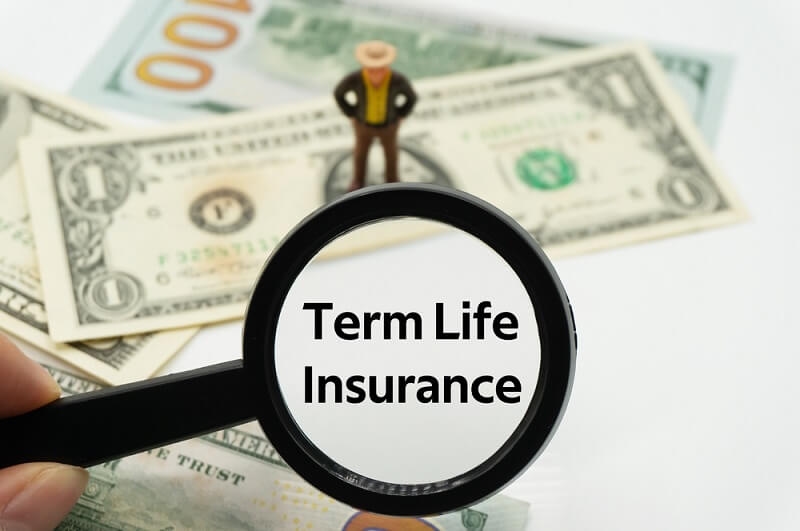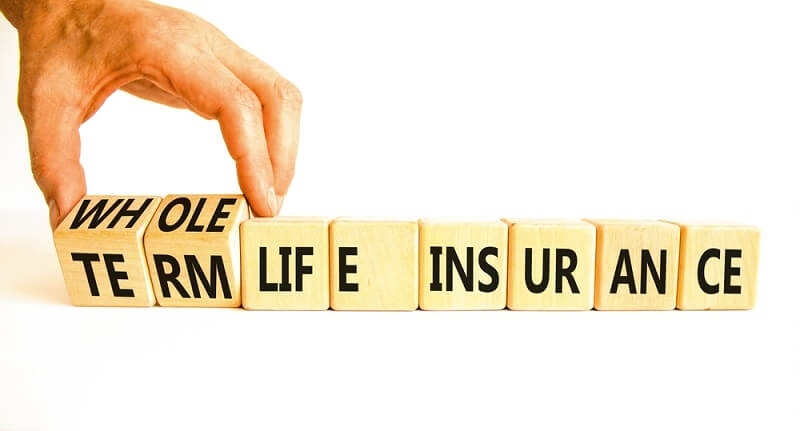
Life is unpredictable, and term life insurance protects those you care about from the financial burden of your absence. It is one of the most accepted and inexpensive forms of life insurance. Still, many people don't understand the policy, how it differs from whole life policies, and the incentives and potential drawbacks.
The following guide will cover everything you need to know about term life insurance: incentives & risks, including some real-world examples; the different policy types; the payment process for term life insurance; and whether or not it is beneficial for seniors or young families. We will compare term life vs. whole life differences and share vital information about the online purchase process of term life insurance.
Whether you're simply looking for affordable term life quotes or looking at quotes and policy options for the first time, this guide covers it all.
Term life insurance is a type of insurance policy that covers the policyholder for a set period, such as 10, 20, or 30 years. If the policyholder dies during the covered term, the insurer will pay a death benefit to the beneficiaries. No death benefit is usually paid if the term runs out and the policyholder remains alive.
Unlike whole or universal life insurance, term life insurance is uncomplicated, inexpensive, and intended for temporary coverage needs.
There are many advantages to term life insurance, but the most significant is cost. It's reasonably priced since it is only for a fixed amount of time and doesn't earn cash value. So, there are affordable rate quotes for term life insurance, even for extensive coverage. For instance, a healthy 30-year-old could pay less than $30/month for a $500,000, 20-year term life policy.
Term life will give you a large amount of coverage (often up to $1 million or more) for a lot less money than the cost of a permanent policy, which is ideal for parents of young kids or homeowners with mortgages.
Term life has a simple structure. You pay a fixed premium for a fixed period. If you die during that period, your beneficiaries get the agreed payout. It's clear-cut, with no hidden clauses, investment terminology, or complex riders.
You get to select the term that fits your needs, such as until your children have graduated or your house is paid off.
Specific term policies provide the opportunity to convert a term into a permanent life insurance policy during the term, usually without a medical exam. So you have options if your needs change.
If you outlive your policy term, your coverage ends. You receive no payout, and you may need to reapply at an older age when premiums are higher or health concerns may arise.
Unlike whole life insurance, term policies do not build cash value. That means you cannot borrow against them or cash them out later in life.
If you choose to renew the policy after it expires, your new premiums will reflect your older age and health status, often significantly increasing the cost.
You may outlive your policy without a backup plan if you misjudge how long you’ll need coverage. For example, they could be unprotected if you still have dependents or debts when the policy ends.

Understanding the term life vs. whole life differences helps you determine which policy better suits your needs.
| Feature | Term Life | Whole Life |
| Duration | 10–30 years | Lifetime |
| Premiums | Lower | Higher |
| Cash Value | None | Yes (grows over time) |
| Payout Availability | Only if death occurs in the term | Guaranteed (when premiums paid) |
| Investment Component | No | Yes (with guaranteed return) |
| Flexibility | High for short-term needs | High for estate planning |
Term life insurance is excellent for income replacement, mortgage protection, or raising children. Whole life may be better for lifelong dependents or wealth transfer.
Ideal for parents with young children or dependents. The policy ensures financial support in the event of a parent’s untimely death.
If you have a mortgage or long-term loan, a term policy can be aligned with the loan term, offering peace of mind for your family.
A term policy can cover debts, protect partners, or fund a succession plan if one owner dies.
If permanent insurance is too costly, term life offers immediate protection at a fraction of the cost.
Term life insurance for seniors is an option, particularly for those who want to cover a specific period (e.g., until retirement loans are paid off or for funeral costs). However, premiums are much higher with age.
The term life insurance payout process is typically quick and straightforward if all documentation is in order.
Delays may occur if:
To avoid problems, be honest in your application and inform your beneficiaries of your policy.
While it's often harder to get affordable coverage later in life, term life insurance for seniors can still make sense under the right circumstances.
However, premiums can become expensive at older ages and may not be the most cost-effective solution for small benefit amounts.
With the rise of digital tools, the online purchase of term life insurance has become fast and convenient.
Please always review the fine print and policy exclusions before you complete the purchase.
Use the DIME method:
Most experts recommend a death benefit of 10–15 times your annual income.
Match the policy term to your life events, such as paying off your mortgage, raising children, or retiring.
Compare providers and use online tools to find the best price for the coverage you need.
Lying on your application can void your policy. Be honest about your medical history and lifestyle habits.
Review your beneficiaries after significant life events like marriage, divorce, or the birth of a child.
If term life doesn’t entirely suit your needs, here are a few alternatives:
Each has different pros, cons, and cost implications, so compare them with your financial goals.
Term life insurance is an effective financial instrument providing cost-effective, flexible protection for the people who need it most. Understanding everything you need to know about term life insurance—risks & rewards—you are now prepared to make a fully informed decision according to your current needs and aspirations.
From affordable term life quotes and digital term life insurance online purchase opportunities to navigating the term life insurance payout process and comparing term life vs. whole life differences, you now have a complete picture of what term life insurance offers.
It’s not just about purchasing a policy—it’s about buying peace of mind. And that starts with the correct information and understanding of what you are purchasing.
This content was created by AI